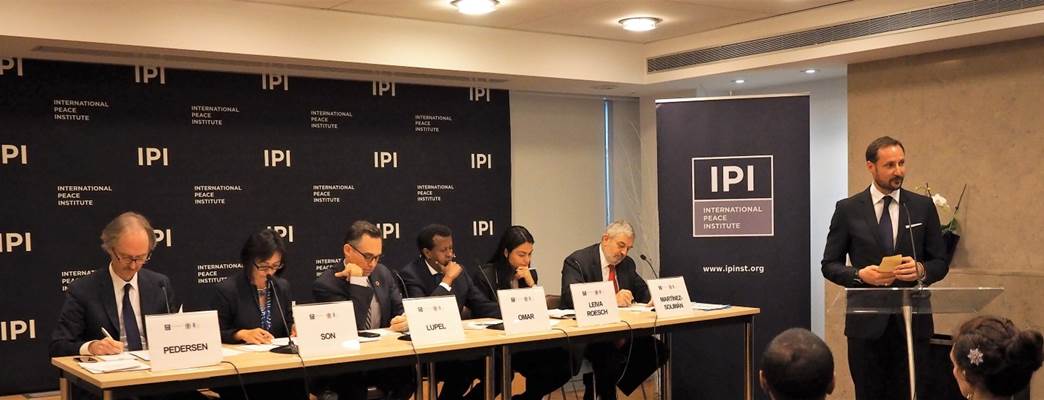I welcome this opportunity to share some thoughts on how to ensure that the 2030 Agenda effectively lifts people in fragile situations out of poverty.
The clock is ticking. Soon, one out of the 15 years' limit to reach this highly ambitious agenda has passed. It is an enormous responsibility which rests upon us all. But we have accomplished great results previously. And we can do it again, if we all pull together.
The experience from the Millennium Development Goals is valuable: we achieved the first goal on halving the number of people living in extreme poverty. In addition, the number of children dying before the age of five has been halved since 1990.
This means that, on a yearly basis, six million children who previously would have died before their fifth birthday, now survive. To put this in perspective, six million people is more than the total population of my country, Norway.
One of the most glaring lessons learned from the MDGs is that the poorest and most vulnerable were left behind. This lesson was recognized when we defined the sustainable development goals. We need to reach out to the poorest and most marginalized groups first. Economic growth is a main driver of sustainable development.
But economic growth that leaves no one behind can deliver sustainable development more quickly. If all groups had benefitted equally from economic growth since 2000, extreme poverty would have been eliminated by 2030. Structural inequality must be addressed. This is what 'leave no one behind' is all about.
Agreeing on Agenda 2030 was a remarkable achievement in many ways. The comprehensive consultative process leading up to the inter-governmental negotiations of the goals here in New York, where civil society throughout the world were able to make their voices heard, paved the way for the notion of inclusiveness being integrated in the new development goals.
Agenda 2030 is also remarkable because member countries came together and agreed that there cannot be sustainable development without peace, and no sustainable peace without development. In order to realize the overarching aim of poverty eradication and sustainable development, we must build just, inclusive and peaceful societies. The SDGs manage to link the overall target – poverty eradication – to the prevention of conflict and the building of resilient societies.
At the root of conflict and fragility lie injustice, human rights abuse and inequality. States should be supported to build strong, inclusive and transparent institutions. They should provide opportunities for livelihood, justice and security for their inhabitants.
Governments throughout the world should seize the opportunity that Agenda 2030 represents. Leaders must claim genuine ownership to the process of building peaceful, just and inclusive societies.
The UN system and other international actors, regional organizations, the myriads of different civil society groups, academics, women and men out there, must keep on voicing their claims, pushing and supporting political leaders to implement the sustainable development goals. Each and every one of us has a responsibility. Remarkable achievements have been made before.
Lastly, I congratulate the UNDP on its 50th anniversary. I commend the organization on what it has achieved during the past five decades, and on its vision for the future. I am proud to serve as your Goodwill Ambassador.
And, while the clock keeps ticking towards 2030, I look forward to learning more from the distinguished panellists and the discussion on how to achieve our ambitious agenda.
